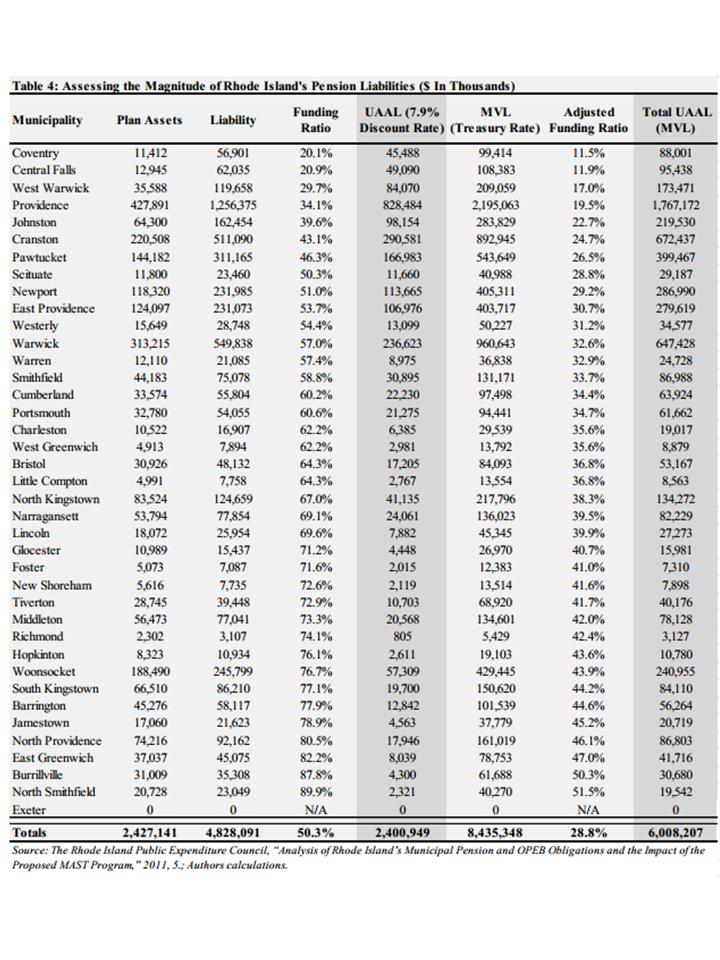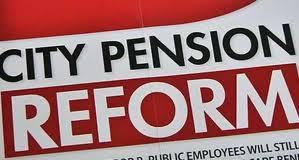The article below reinforces the concept that our Center’s pension task force has been saying for many months … that state and municipal entities are dramatically understating the true scope of their unfunded pension liabilities.
FROM THE NEW YORK TIMES, May 27, 2012
Public Pensions Faulted for Bets on Rosy Returns
By MARY WILLIAMS WALSH and DANNY HAKIM
Few investors are more bullish these days than public pension funds.
While Americans are typically earning less than 1 percent interest on their savings accounts and watching their 401(k) balances yo-yo along with the stock market, most public pension funds are still betting they will earn annual returns of 7 to 8 percent over the long haul, a practice that Mayor Michael R. Bloomberg recently called “indefensible.”
Now public pension funds across the country are facing a painful reckoning. Their projections look increasingly out of touch in today’s low-interest environment, and pressure is mounting to be more realistic. But lowering their investment assumptions, even slightly, means turning for more cash to local taxpayers — who pay part of the cost of public pensions through property and other taxes.
In New York, the city’s chief actuary, Robert North, has proposed lowering the assumed rate of return for the city’s five pension funds to 7 percent from 8 percent, which would be one of the sharpest reductions by a public pension fund in the United States. But that change would mean finding an additional $1.9 billion for the pension system every year, a huge amount for a city already depositing more than a tenth of its budget — $7.3 billion a year — into the funds.
But to many observers, even 7 percent is too high in today’s market conditions.
“The actuary is supposedly going to lower the assumed reinvestment rate from an absolutely hysterical, laughable 8 percent to a totally indefensible 7 or 7.5 percent,” Mr. Bloomberg said during a trip to Albany in late February. “If I can give you one piece of financial advice: If somebody offers you a guaranteed 7 percent on your money for the rest of your life, you take it and just make sure the guy’s name is not Madoff.”
Public retirement systems from Alaska to Maine are running into the same dilemma as they struggle to lower their assumed rates of return in light of very low interest rates and unpredictable stock prices.
They are facing opposition from public-sector unions, which fear that increased pension costs to taxpayers will further feed the push to cut retirement benefits for public workers. In New York, the Legislature this year cut pensions for public workers who are hired in the future, and around the country governors and mayors are citing high pension costs as a reason for requiring workers to contribute more, or work longer, to earn retirement benefits.
In addition to lowering the projected rate of return, Mr. North has also recommended that the New York City trustees acknowledge that city workers are living longer and reporting more disabilities — changes that would cost the city an additional $2.8 billion in pension contributions this year. Mr. North has called for the city to soften the blow to the budget by pushing much of the increased pension cost into the future, by spreading the increased liability out over 22 years.
Ailing pension systems have been among the factors that have recently driven struggling cities into Chapter 9 bankruptcy. Such bankruptcies are rare, but economists warn that more are likely in the coming years. Faulty assumptions can mask problems, and municipal pension funds are often so big that if they run into a crisis their home cities cannot afford to bail them out.
The typical public pension plan assumes its investments will earn average annual returns of 8 percent over the long term, according to the Center for Retirement Research at Boston College. Actual experience since 2000 has been much less, 5.7 percent over the last 10 years, according to the National Association of State Retirement Administrators. (New York State announced last week that it had earned 5.96 percent last year, compared with the 7.5 percent it had projected.)
Worse, many economists say, is that states and cities have special accounting rules that have been criticized for greatly understating pension costs. Governments do not just use their investment assumptions to project future asset growth. They also use them to measure what they will owe retirees in the future in today’s dollars, something companies have not been permitted to do since 1993.
As a result, companies now use an average interest rate of 4.8 percent to calculate their pension costs in today’s dollars, according to Milliman, an actuarial firm.
In New York City, the proposed 7 percent rate faces resistance from union trustees who sit on the funds’ boards. The trustees have the power to make the change; their decision must also be approved by the State Legislature.
“The continued risk here is that even 7 is too high,” said Edmund J. McMahon, a senior fellow at the Empire Center for New York State Policy, a research group for fiscal issues.
And Jeremy Gold, an actuary and economist who has been an outspoken critic of public pension disclosures, said, “If you’re using 7 percent in a 3 percent world, then you’re still continuing to borrow from the pension fund.”
The city’s union leaders disagree. Harry Nespoli, the chairman of the Municipal Labor Committee, the umbrella group for the city’s public employee unions, said that lowering the rate to 7 percent was unnecessary.
“They don’t have to turn around and lower it a whole point,” he said.
When asked if his union was more bullish on the markets than the city’s actuary, Mr. Nespoli said, “All we can do is what the actuary is doing. He’s guessing. We’re guessing.”
Vermont has lowered its rate by 2 percentage points, but for only one year. The state recently adopted an unusual new approach calling for a sharp initial reduction in its investment assumptions, followed by gradual yearly increases. Vermont has also required public workers to pay more into the pension system.
Union leaders see hidden agendas behind the rising calls for lower pension assumptions. When Rhode Island’s state treasurer, Gina M. Raimondo, persuaded her state’s pension board to lower its rate to 7.5 percent last year, from 8.25 percent, the president of a firemen’s union accused her of “cooking the books.”
Lowering the rate to 7.5 percent meant Rhode Island’s taxpayers would have to contribute an additional $300 million to the fund in the first year, and more after that. Lawmakers were convinced that the state could not afford that, and instead reduced public pension benefits, including the yearly cost-of-living adjustments that retirees now receive. State officials expect the unions to sue over the benefits cuts.
When the mayor of San Jose, Calif., Chuck Reed, warned that the city’s reliance on 7.5 percent returns was too risky, three public employees’ unions filed a complaint against him and the city with the Securities and Exchange Commission. They told the regulators that San Jose had not included such warnings in its bond prospectus, and asked the regulators to look into whether the omission amounted to securities fraud. A spokesman for the mayor said the complaint was without merit.
In Sacramento this year, Alan Milligan, the actuary for the California Public Employees’ Retirement System, or Calpers, recommended that the trustees lower their assumption to 7.25 percent from 7.75 percent. Last year, the trustees rejected Mr. Milligan’s previous proposal, to lower the rate to 7.5 percent.
This time, one trustee, Dan Dunmoyer, asked the actuary if he had calculated the probability that the pension fund could even hit those targets.
Yes, Mr. Milligan said: There was a 50-50 chance of getting 7.5 percent returns, on average, over the next two decades. The odds of hitting a 7.25 percent target were a little better, he added, 54 to 46.
Mr. Dunmoyer, who represents the insurance industry on the board, sounded shocked. “To me, as a fiduciary, you want to have more than a 50 percent chance of success.”
If Calpers kept setting high targets and missing them, “the impact on the counties won’t be bigger numbers,” he said. “It will be bankruptcy.”
In the end, a majority decided it was worth the risk, and voted against Mr. Dunmoyer, lowering the rate to 7.5 percent.




